
The wireless technology we know as WiFi has been around for over 30 years. In this article, we will recall why WiFi is called exactly as it appeared, what were the main stages of development and what awaits the technology in the future.
All this and a little more - under the cut.
Why “WIFi”?
Many of us take the acronym for granted without thinking about why the technology is called that way. The casket opens simply - the fact is that WiFi was initially promoted with the slogan "The Standard for Wireless Fidelity", which can be translated as "the standard of wireless accuracy."
Then the technology was abbreviated as "Wireless Fidelity", which was eventually cut to WiFi. The abbreviation HiFi, which stands for High Fidelity, also played its part. Maybe the WiFi developers were trying to make their technology recognizable precisely at the expense of HiFi - who knows. Be that as it may, they achieved their goal.
How it all started
It probably won't be a mistake to say that the technology was born in 1985. Then the FCC officially allowed the use of certain frequencies of the radio spectrum without a license. This initiative was also supported by other countries, so business quickly realized that it was possible to earn money in this niche. One after another, wireless projects began to emerge, which various companies tried to commercialize.
It was only at the very end of the last century, in 1997, that the first specifications for WiFi were introduced. The first generation, 802.11, made it possible to transfer data at a speed of 2 Mbps, despite the fact that the range of the module was very small. And the cost of the equipment that provided wireless data transmission was simply exorbitant.
Then, around 1999, prototypes of two editions of the base standard appeared: 802.11b and 802.11a. They provided unprecedented data transfer rates over the air - up to 11 Mbps. In this case, the radio band was used the same as now - 2.4 GHz. The range was much wider than the very first generation of WiFi. Radio equipment is becoming more and more affordable - ordinary users can already buy it.
A little later, the speed was increased to 54 Mbps, using the 5 GHz band and calling the specification 802.11a. It was then that the name WiFi was fixed, which is now the designation for the 802.11 specification.
In addition, developers began to take care of the security of transmitted data better than before. So, WPA (Wi-Fi Protected Access) came to replace leaky WEP. A year later, in 2004, the WPA2 protocol appeared, which became very reliable in protecting wireless networks.
Ten years later
Yes, the technology has evolved over the course of ten years, but not very quickly - the bandwidth of the channel was quite enough for the needs of users of that time. But then it became clear that it could not continue this way - a new standard was needed that would allow more data to be transferred per unit of time.
The main reason is that the quality of photos and videos has improved significantly compared to the end of the 20th century. One has only to look at photographs of the early 2000s, comparing them with digital content of an earlier time, and everything will become clear.
In general, technologies did not stand still, in 2003, for example, the 802.11g specification appeared. But this was not something fundamentally new - the developers took advantage of the technology of the 5 GHz band, adapting it to the 2.4 GHz band. By the way, the number of WiFi Alliance members also began to grow by leaps and bounds. In 2003 there were more than 100 of them. Accordingly, more and more companies were developing equipment compatible with the WiFI wireless standard.
Hurray, new technologies
In 2009, the development team from the WiFi Alliance adopted a new standard, 802.11n. This was already a new generation of WiFi, without cloning the mechanism for transferring data from one range to another. At the same time, the data transfer rate has increased many times - up to 600 Mbit / s.
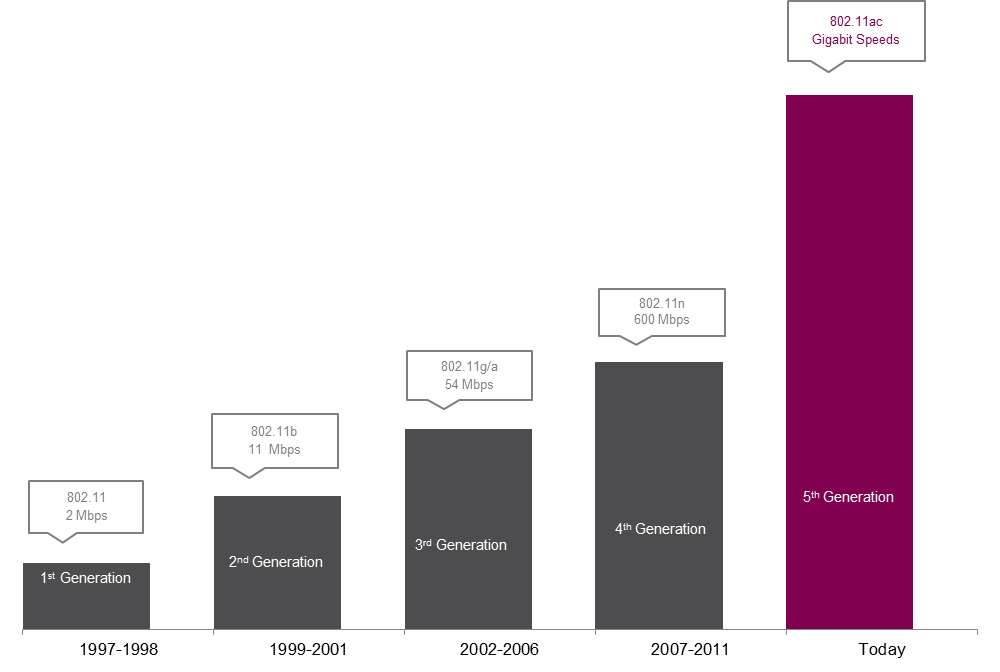
This dramatic increase in throughput was achieved by using multi-streaming MIMO data instead of SISO. Multi-stream transmission allowed the use of multiple data streams directed by different antennas. At the very beginning, the standard made it possible to work with 4 streams, each of which provided a bandwidth of 150 Mbps.
At the same time, the technology was “smart” - the signals were processed and then combined into a single whole, which made it possible to achieve a throughput of 600 Mbit / s, at least in theory. In general, MIMO laid the foundation for the development of modern WiFi - high-speed, reliable and long-range.
And we develop again
Wireless technology has continued to evolve. So, in 2015, a new revision appeared - WiF 802.11 AC, where the number of MIMO streams was brought to 8. Thanks to this, as well as other technical tricks, it was possible to achieve the throughput of one channel up to 866 Mbit / s. True, there were some difficulties with achieving the theoretical maximum, since in the narrow 2.4 GHz frequency band it is quite difficult to achieve ideal reception due to the congestion of the "air".
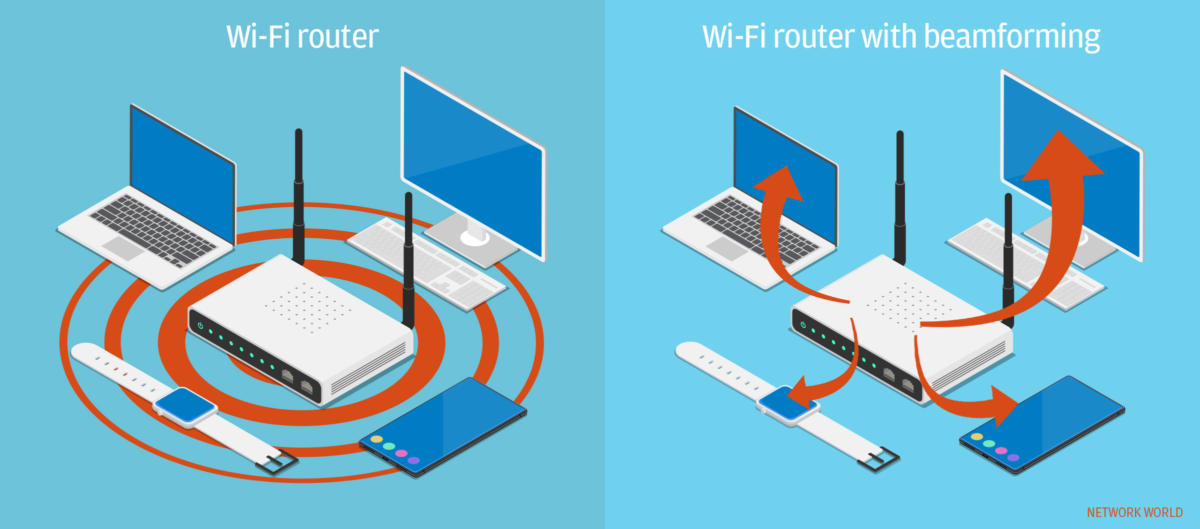
Those 7 Gbps throughput were extremely rare. Still, the speed is tremendous compared to previous generations. MIMO has improved, so that MU-MIMO technology appeared - channel multiplexing. Access points became smart, they were taught to split one channel into several subchannels, each of which exchanges data with subscribers. This made it possible to optimize the operation of access points even in very high-load networks.
This was also achieved due to the phase shift of the signal in such a way that the interference became "constructive", so that the radio waves were amplified due to the interaction.
New achievements
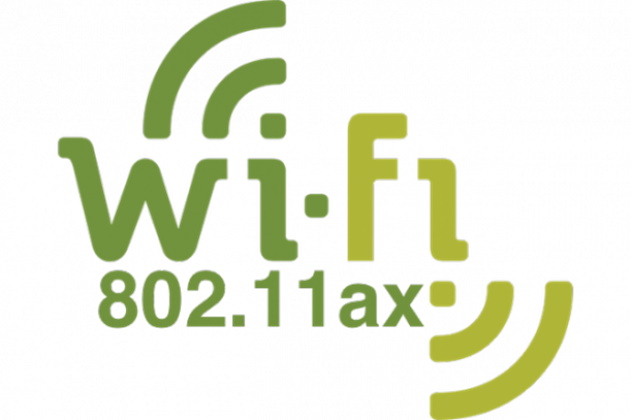
Recently, a new standard was adopted - 802.11 AX, which is also called Wi-Fi 6. There were several innovations at once, including the addition of a new OFDMA technology. It allowed to increase the performance of one channel with a spectrum width of 40 MHz to 290 Mbps. The MU-MIMO scheme has been improved, now there is a two-way full-fledged data exchange mode.
In particular, the developers introduced 1024 Quadrature Amplitude Modulation (QAM), which increased the modulation density and increased the data rate by about a third.
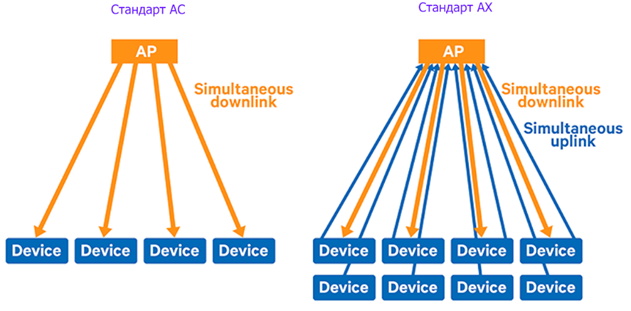
802.11ax allows you to work in high-density environments by transmitting heavy media content over the air, such as 4-8K video. The number of access points located in close proximity to each other practically does not affect the quality of data transmission and reception. The advantage of the new generation of communication is that it is quite energy efficient, so that the batteries of mobile devices last for a longer operating time.
What's next?
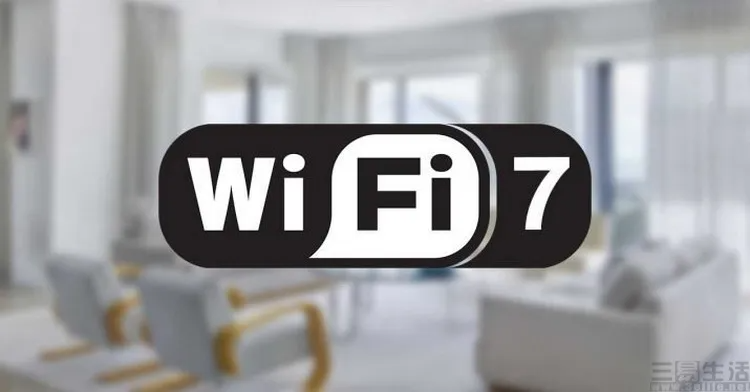
In the near future, we are waiting for a new wireless data transmission protocol WiFI 7 or IEEE 802.11be. It will work with CMU-MIMO technology, which will support 16 data streams at once. Besides the traditional 2.4GHz and 5GHz bands, WiFi 7 will also support the 6GHz band. All three frequency bands can work simultaneously.
The theoretical maximum transfer rate of Wi-Fi 7 can reach 30 Gbps, which is three times the maximum speed of 9.6 Gbps for Wi-Fi 6.
Unfortunately, the development of the basic mechanisms of the technology is delayed due to the epidemic. It was originally planned that all major work will be completed by 2021, and the standard will be approved in 2024. But now, most likely, this period will be increased by about six months, if not a year. But in any case, the development has not stopped, it continues, albeit at a somewhat slower pace.
Zyxel has WiFi 6 too

Zyxel, like any manufacturer respecting itself and its customers, presented a wide range of WiFi 6 access points and PoE switches for them. There are also budget models and fancy dots with “quantum suppressor of gravitational disturbance”. :-)
See for yourself .
And if you liked it, come to us and stay:
- News channel in Telegram
- Telegram chat support for specialists
- Forum for specialists
- Our YouTube